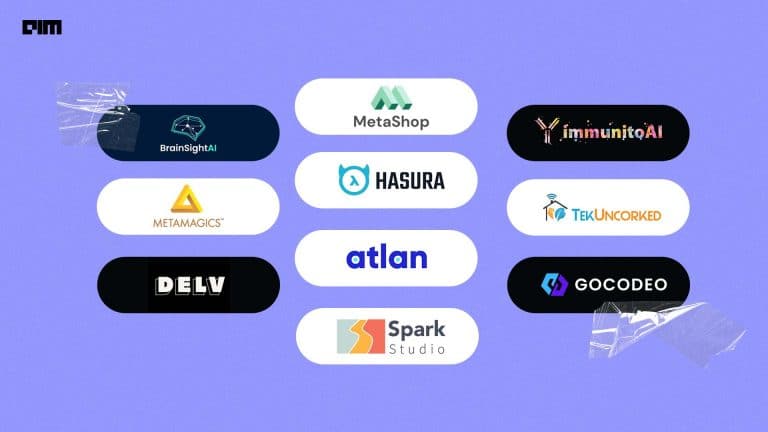AI has become the next big innovation that established companies and start-up organisations are fighting to integrate into their structure. The demand is due to the several advantages of adopting the technology and the proven successes that some organisations have received after integrating AI. It has become a key strategic differentiator for some, but for others, the investment has not been worth the return. To add to that, the field is constantly evolving, making it a complicated process for start-up founders to decide the key areas to begin their AI integration. Additionally, when it comes to AI, leaders are often misinformed about the range of tasks AI can perform—the popular image of AI is set in its utility for complex tasks only.
In this article, we will discuss some of the most proven and quick wins of AI use-cases and how start-up founders can integrate them. However, before getting into the use-cases of AI, let’s look at what AI is good at and the tasks that need AI interference over human judgements.
AI vs Human Judgement: What is AI Good at?
Expert systems have been in practice for a long time, and sometimes all that is needed is good old human intuition backed by data. AI does not need to solve every problem out there. It sure has its advantages, but it is important to choose use cases wisely as some problems are better solved by humans. We can rely on our good all well trained natural intelligence too. Having said that, there are compulsive preconditions that make AI systems stand out. I am attempting to list a few of those here.
- Attributable problems: A few years back, job descriptions for a data scientist would look like, “We have collected tons of data and need someone to interpret and make use of it”. Data was considered more for insights, and decisions were taken just by keeping “data” in the loop. With increased consumer adoption of digital products, improvements in infrastructure, and the acceptability of experimentation in organisations, data science can create attributable impacts. I would say attribution is one of the possible preconditions of setting up AI systems. If the success of an AI initiative is not attributable and measurable, then, possibly, it is better to hold off on that experiment. For instance, an AI model that caused a marketing campaign uplift over a well-defined control group is more impactful and attributable than venturing into customer segmentation types of problems.
- Complex landscapes: Unlike systems based on human judgement, AI thrives in fast-changing environments. The more complex and dynamic the system is, the better it is for AI to play with. For instance, providing the right discounts to the right customers during a flash sale on an e-commerce website lends itself to be solved well with AI. The customer’s preference could change depending on the construct of the discount offer as well as based on the duration of the deal itself, and AI can maximise the revenue from the sale without dipping user experience.
- Extreme number of choices: “Choice Overload”, as it’s popularly called, dissuades customers from transacting when there are a lot of choices to choose from. Humans want to make decisions with fewer choices. Too many – they can lose interest. Recommendation systems driven by ML models help in presenting the right choices for the customers. So, if your product or service has too many choices, it is a good time to consider a machine learning model over human judgement. These decisions can not be made by humans working on spreadsheets. ML models can play a significant role in presenting ‘meaningful’ choices to the customers.
- Well instrumented data: AI is built on data. If the system does not have any data, then, possibly, stay away from building any complex system until you have collected a good volume of data and established a high scale. For instance, if a lending company does not have exposure to different risk segments of customers or has not observed the loan repayment for a longer window of time, there is no pressing need in starting to invest in a predictive model. The company is better off focusing on instrumenting data, which will become the foundation for building an AI predictive system later.
- Unstructured data: If your business or product deals with large-scale unstructured data, employing humans to classify or process them may be impractical. AI may prove to be more useful in this case.
- Multiple optimisation criteria: AI can optimise multiple constraints at the same time. For instance, we want to do vehicle route optimisation with both time and money constraints – this is very difficult to solve using heuristic use cases. Instead, AI can step in, take into account multiple factors such as the best routes available, less time taken in terms of distance and time and traffic situations, and provide the route that takes the least amount of time with limited money spent on gas or tolls.
Once you are positive about the AI environment and context explained above, you can move on to the next step of integrating AI – identifying use cases.
Low Hanging Fruits
AI is good at completing varied tasks, but which is the best use case for your organisation to start with? Popular culture has surely given people more complex ideas of AI utilities. And while they are not necessarily incorrect, the applications of AI range from complicated workloads to simpler and easily achievable tasks. For start-ups, it is critical to not go after the huge problems with big solutions from the get-go. The better way to begin integrating AI in your business is to start with low hanging fruits.
The most successful form of machine learning is supervised learning. The ‘Collect, Learn and Predict’ framework always works. This entails collecting data that will be used for training. We can then learn from the data and produce predictions in the form of probability scores or forecasted values. Some of the most popular use cases for supervised learning are in credit scoring models, campaign targeting with a constraint, fraud systems or large scale forecasting systems. It has been proven that it is better to leverage AI for such applications than relying on human judgement. The key technique to proving the impact is to measure how well the models are performing over the existing baseline processes.
AI is a boon when it comes to making micro-decisions at scale. Let’s suppose you have to show the consumer the top six models out of the thousands of product categories to choose from. AI can pick a subset of ‘n’ categories to recommend to the user so that the revenue or click is optimised. Furthermore, the underlying algorithm can learn the generic patterns, making it applicable to cases where the user has not ‘discovered’ the product in the past.
For instance, let’s consider the Netflix recommendation engine that chooses from thousands and thousands of films on the platform to recommend a select list of films to the user. This list is personalised and based on the past history of the user. It can even study behavioural patterns and recommend new films to the person watching. So, if the engine notices an English user watching a few French films in the drama genre, it might recommend international films in other languages such as German or Turkish, possibly in drama or a related genre. The engine can do so in microseconds while personalising it to every user on the platform. Additionally, the engine can also tweak itself based on the feedback received from the user.
Another use case of AI is in automation. Automation applications that save time and money for the company is a clear place for data science teams to start. With the growing consumer base, tasks such as classifying the incoming customer service tickets or KYC manual validations are not possible to be handled manually or without substantial investment. AI can be used here as a starting point to automate and quicken the pace of the workflow. AI models have also been proven to be a better choice while dealing with text and images. Leveraging AI to automate tasks shows fast improvements to the organisational workflow and enhances business growth.
AI can generate insights on structured data, but it should be done with care. When dealing with data insights, causality is far tougher to explain than actually predicting what is going to happen next. Having said that, it is not realistic to ask data science teams to completely avoid questions that need insightful answers. Business problems like “why did the sales fall?” or “what are the top drivers of attribution?” are not low hanging in the first place, nor are the impacts directly attributable. In such cases, it is advisable to spend time establishing the expectations and risks of the project before starting out on insights generation.
Preparations to make before integrating AI in your organisation
We have already discussed where organisations need to integrate AI and the basic use cases of the technology. Still, there are some starting points that companies need to be prepared with before adopting AI technologies. Let’s discuss them in brief.
Start with a baseline or a naive approach. For instance, if you are predicting the delivery time using a machine learning model, the naive approach would be to state the overall average delivery time for every order. Benchmark your ML model over the naive baseline in offline and in production and check if the ML model is better than the naive logic.
Secondly, establish model governance councils or frameworks. It is of utmost importance to ensure that the AI models being produced are responsible, robust and without bias.
Thirdly, set up metrics of measurement. The importance of these metrics and guard rails cannot be overstated. Product and data teams should invest in developing metrics and guard rails to measure various success dimensions. One type of intervention could influence other systems. For example, it is common to measure recommendation systems on relevance, click-through rates or conversion rate metrics. However, it is also important to measure if the system iis showing enough variety of recommendations. Static recommendations for a long period can make users lose interest in the section. Certain types of recommendations are increasing demand for certain products and hence increasing more ‘out of stock’ rates, etc.
Fourthly, experiment. A differentiating factor between organisations that use AI and organisations that AI empowers is the culture of experimentation. Experimenting before implementing allows companies to understand the impact of the model at hand and ensure they have the most compelling insights. Thus, it is important to invest in a good experimentation infrastructure.
Fifth, organisations should invest in setting up infrastructure that will make model deployment easier. A lot of cases get struck at the model deployment stage if the proper infrastructure to execute the model in production is not available.
Finally, it is important for organisations applying AI for use cases involving images and text to invest in a tagging team beforehand. Data labelling or describing the data type to the system is one of the core steps to ensure that the model can correctly understand & interpret the input data. A tagging team can manually tag the data among categories such as image, subject, topic, etc.
Wrapping up
AI is more accessible than ever today, and for organisations taking the plunge, it is important to understand the basics of the technology before integrating it. Beware of the myths around AI implementation and ensure that you have your business problem in place before integrating AI. The best use cases are the ones closest to solving your business problems.
AI is a great enabler, and when the problem and measurement criteria are set up well, it can become a strategic advantage for companies. Start simple, experiment more, question complexity, and measure, measure, measure.
This article is written by a member of the AIM Leaders Council. AIM Leaders Council is an invitation-only forum of senior executives in the Data Science and Analytics industry. To check if you are eligible for a membership, please fill the form here.


















































































